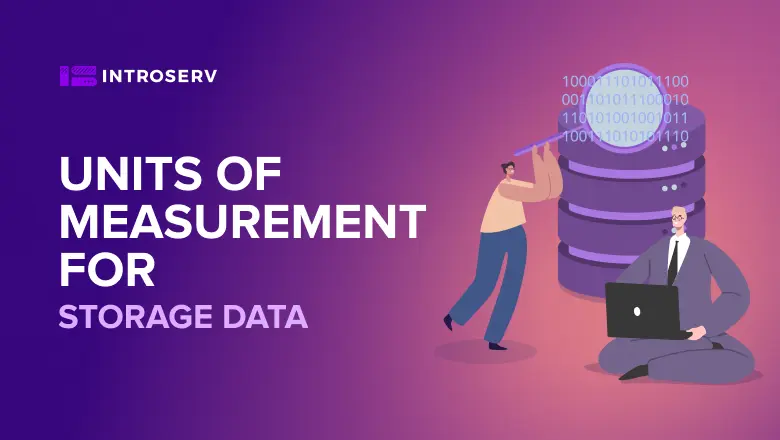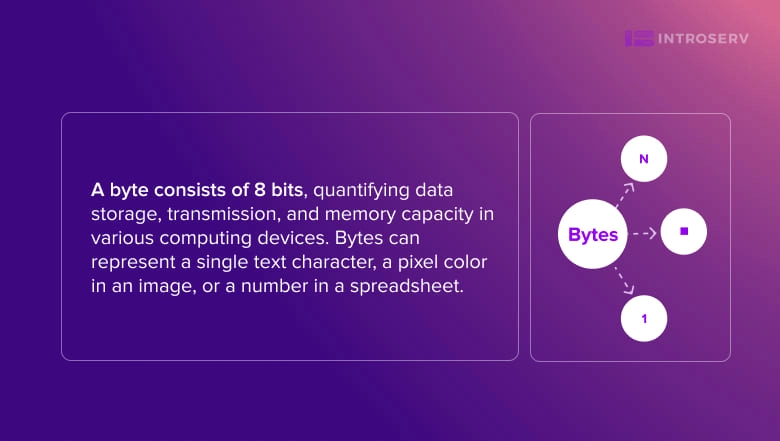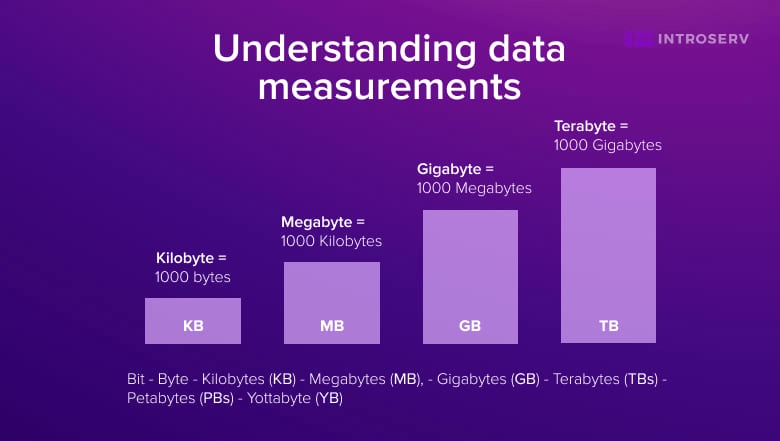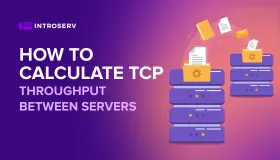
Understanding Units of Information: From Bits to Tebibytes
Units of information are nothing but a representation of the capacity of a specific communication channel or a data storage system. Since information is the processed form of data and the storage capacity is measured for data, the term 'units of information' translates to 'units of storage/data/memory/computing’.
Learning about storage/computation terms like terabyte, tebibyte, gigabyte, etc., is essential as it helps users and experts to plan the storage capacity and bandwidth of systems and communication mediums for successful computation. It also helps IT service providers determine the expense and market value of their products.
Most Common Units of Information Capacity
At the heart of information technology lies the fundamental unit of information – the bit. The term "bit" is a contraction of "binary digit," representing the most basic unit of information. A bit can have one of two values: 0 or 1.
It's akin to a tiny switch that can be either off (0) or on (1). While bits are the building blocks of digital data, they are typically not practical for measuring larger quantities of information due to their microscopic size. Hence, we employ the byte as the common unit of information capacity to represent larger amounts of data.
A byte consists of 8 bits, quantifying data storage, transmission, and memory capacity in various computing devices. Bytes can represent a single text character, a pixel color in an image, or a number in a spreadsheet. The collection of bytes combines to form other larger units of information like kilobytes, megabytes, gigabytes, and tebibyte, etc. For instance, a smartphone with 64 gigabytes (GB) of storage can store 64 billion bytes of data/information.

The Largest Units of Information
As technology advances, the need for storage capacity grows exponentially. Therefore, larger units of information have emerged. The most common units of information include Bit, Byte, Kilobytes (KB), Megabytes (MB), and Gigabytes (GB). But, the largest units of information we typically encounter regarding practical usage are the Terabytes (TBs) and Petabytes (PBs). However, theoretically, the largest unit is a Yottabyte (YB), and currently, there is nothing of that scale.
Terabytes (TB)
One terabyte is equivalent to 1024 gigabytes or approximately one trillion bytes. This capacity is commonly available in devices like external hard drives, laptops, and larger backup systems. Due to its potential to store vast amounts of data, including high-definition videos and photo libraries, terabytes have become the new standard for personal and professional data management.
Petabytes (PB)
Petabytes take data storage to a whole new level. One petabyte is equivalent to 1024 terabytes, or about one quadrillion bytes. This massive capacity is typically reserved for enterprise-level storage solutions, research centers, cloud service providers, data centers and organizations dealing with massive data sets of scientific data, financial records and multimedia content.
How is a Tebibyte Different from a Terabyte?
As we all know, a terabyte is equal to 1,000 gigabytes or one trillion bytes. Yes, it sounds huge, but such capacities are not uncommon nowadays. There are personal computers, external hard disks and even smartphones on the market with terabyte capacities.
To put it in perspective, a single terabyte can store around 200,000 photos, 250 hours of high-definition video or a huge library of digital books. But the world of technology is not limited to terabytes. For even more important data storage needs, a lesser-known but no less important unit of information, the tebibyte (TiB), comes onto the scene.
Tebibyte's Role in Technology
The term "tebibyte" may sound like a mouthful, but it plays a crucial role in modern computing. A tebibyte is a unit of digital information that is part of the International System of Units (SI) and is equal to 2^40 bytes or 1,099,511,627,776 bytes. It differs from the terabyte, which is based on the decimal system and is equal to 1,000,000,000,000,000 bytes. Simply put, 1 tebibyte is equal to approximately 1.1 TB.
Tebibytes are especially important when discussing storage devices, memory capacity and data transfer rates in binary computing. Essentially, it provides a more accurate representation of storage capacity in the digital realm where binary computing is common.
For example, buying a hard disk or solid state drive (SSD) with a capacity of 1 terabyte is one tebibyte in binary terms. This distinction is becoming increasingly important as storage devices become larger and more powerful. Understanding the tebibyte helps you be aware of the actual storage capacity you are buying, especially as technology advances.

How are Units of Information Stored?
Units of information, ranging from bits to bits and bytes, are stored in various ways depending on the environment and purpose. All data is stored inside the computer in the form of bits. This means that huge amounts of video, photos and other data are converted into a string of 0s and 1s for storage.
Sequences of bits combine to form bytes, and sequences of bytes combine to form kilobytes, megabytes, gigabytes, gigabytes, bytes, etc. Common media used for storing units of information are as follows:
1. Magnetic Storage: Traditional hard disks use magnetic fields to store data. Data is written and read by magnetizing and demagnetizing small regions on rotating disks or platters. This technology has been around for decades and is still widely used for mass storage.
2. Solid State Storage: Solid state drives (SSDs) have become increasingly popular due to their speed and durability. They store data in NAND flash memory cells, electronic components with no moving parts. SSDs are commonly found in laptops, smartphones and data centers.
3. Optical Storage: CDs, DVDs and Blu-ray discs use optical technology to store data as patterns of pits and soil on the surface of the disc. A laser beam reads the data by detecting reflections from these patterns.
4. Cloud Storage: Cloud services store data on remote servers connected to the internet. Users can access their data from anywhere with an internet connection. Providers like Google Drive, Dropbox, and Amazon Web Services as INtTROSERV offer cloud storage solutions.
5. RAM (Random Access Memory): RAM is a type of volatile memory used in computers to temporarily store data that the CPU (Central Processing Unit) needs for processing. It's faster than long-term storage but loses data when power cuts off.
Final Decision
As a result, units of information capacity are the backbone of modern technology, enabling us to measure, manage and plan and effectively manipulate the vast amounts of data generated.
Ranging from bits to tebibytes, these units help us make sense of the digital world and enable us to harness the power of information to drive innovation and progress. As technology evolves, knowledge of these units is essential for efficient and versatile computing systems.
At our company you can also order dedicated servers in the USA or other data centers, VPS in Europe or other countries.








